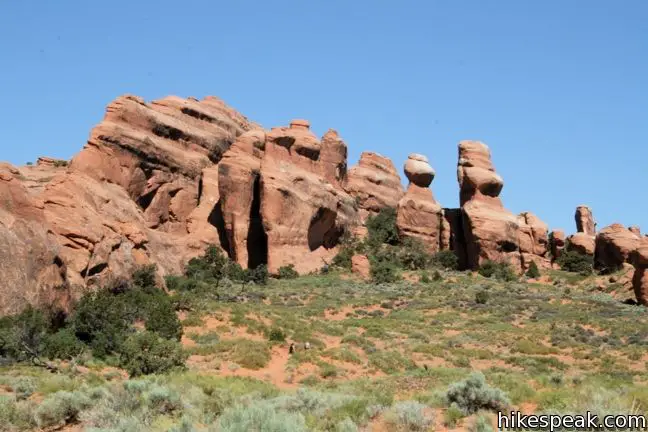

The sandstone, however, did not come to rest until a larger amount of rocks fell with loud cracking noise, releasing some of the stress. Shortly after I had taped the first small rock fall. Therefore I kept the video-camera directed towards the Landscape Arch and tried to find the cracks with the zoom-lens. From now on one could clearly hear a continuously damp cracking. As the process is repeated the remaining rock as the base of the cliff reduces the force of the waves, this means a wave cut platform is left on the landscape leading up to the new cliff base.Then I heard again cracking and the noise of rocks hitting one against the other. The process starts again and repeats itself over time. The backwash from the sea carries the material away from the cliff face. Over time the wave cut notch is eroded further backwards and when the weight of the cliff above and the force of gravity become too great, the cliff will fall into the sea.

The sea attacks the bottom of the cliff through the processes of hydraulic action, where the water smashes against the rock, abrasion, where the material found in the water wears away the cliff, and solution, where the acids in the water reacts with the rock causing more erosion.Īll of the processes come together to form a wave cut notch at the base of the cliff. Weathering occurs at the top of the cliff face making it weaker and breaking parts of the rock away. One of the most common features of a coastline is a cliff. Solution is when the acid in the sea water reacts with and erodes the rock such as chalk or limestone. The coastline can also be eroded due to chemical erosion. Hydraulic action is when the waves smash against the coastline and the force of the water causes the coastline to be eroded.Ībrasion also takes place, this is where the waves pick up rocks and other material and throw it against the coastline, causing further erosion. The erosion occurs due to a number of different processes caused by the sea. The harder rock for example, chalk, will erode more slowly forming headlands which jut into the sea. The softer rock, for example, clay, will erode more quickly forming bays which make sandy beaches. Headlands and bays are most likely to be formed in areas where there are alternative bands of soft and hard rock, which meet at right angles to the coast (discordant). As the headland retreats under this erosion, the gently sloping land at the foot of the retreating cliff is called a wave-cut platform.The stack gets eroded until only a stump remains.The rock at the top of the arch becomes unsupported as the arch is enlarged, eventually collapsing to form a stack.The caves are deepened and widened on both sides of the headland until eventually the sea cuts through the headland, forming an arch.These lines of weakness get enlarged and develop into small sea caves.Undercutting takes place all around the headland. The sea and its waves cause hydraulic action, abrasion, attrition and solution to erode along any lines of weakness on rocks.

A number of stages were involved in the original headland shape becoming eroded to the present coastal landscape.


 0 kommentar(er)
0 kommentar(er)
